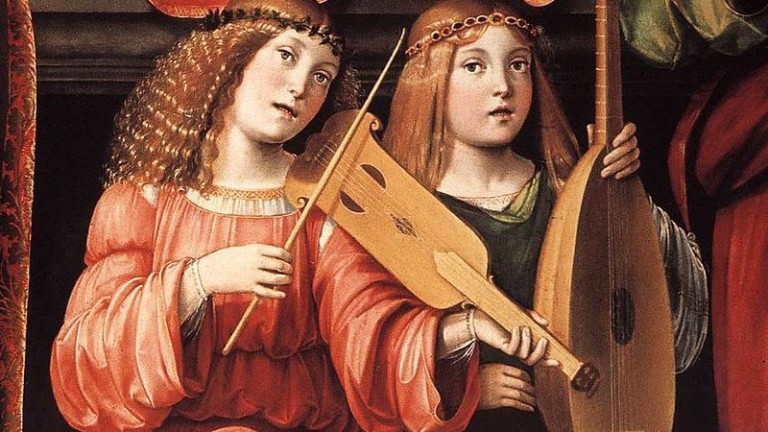History and music in Bologna
The musical history of Bologna is as extensive as the life of the city itself. If we wish to trace a bridge from past to present, its lines of conjunction include institutions, places and artists who can be discovered, visited and known by exploring the city streets.
Bologna, a musical beacon for artists and institutions throughout Europe
Via Guerrazzi 13 has been the seat of the Accademia Filarmonica since its foundation. Created in 1666 by Vincenzo Maria Carrati, it was one of the most important European institutions and still today conserves the spirit that has marked its history.
Among its members was Giovanni Battista Martini, a Franciscan friar born in 1706 who became a genuine authority in the musical field, making Bologna a beacon for the most important artists. These included W. A. Mozart, who came to the city in 1770 to study with Martini and enter the Accademia Filarmonica. The Conservatorio is dedicated to Padre Martini and his immense work is illustrated in the Museo Internazionale e Biblioteca della Musica di Bologna, in Strada Maggiore 34.
In 1732, Carlo Broschi, better known as Farinelli – one of the most significant castrato singers of all time – moved to Bologna, just outside Porta Lame, in Via Zanardi, now the site of the Centro Meccanografico delle Poste. Ambitious and competitive, he rivalled several times in the city with the famous Bolognese contralto Antonio Bernacchi, his singing teacher.
The dissemination of musical culture in the city
In 1798, the Accademia Filarmonica was appointed to create a plan for musical education in Bologna. This led to the birth, in 1804, of the Liceo Filarmonico, a school for the dissemination of musical culture within the Augustine Convent of San Giacomo, in present-day Piazza Rossini. Initially directed by Stanislao Mattei, he was succeeded by Gioachino Rossini, as honorary consultant, Luigi Mancinelli, Giuseppe Martucci, Marco Enrico Bossi, Ferruccio Busoni and Franco Alfano, concluding with Cesare Nordio, who formed the first class of orchestral conducting in Italy and, in 1945, transformed the Liceo into the Conservatorio Statale G. B. Martini.
Bologna welcomed musicians. Gioachino Rossini himself, originally from Pesaro, described his relationship with the city as follows: “In Bologna I found hospitality and friendship. Bologna is my second home and I am proud to be, if not by birth, then by adoption, its son.”
The Teatro Comunale
A short distance from the Conservatorio is the Piazza formerly named after Santa Cecilia, the patron saint of music, but now dedicated to the composer Giuseppe Verdi: it was here that the Teatro Comunale rose.
The Teatro Comunale was born in 1763 following a fire that destroyed the previous Teatro Malvezzi. Ever since then, it has been the fulcrum of classical music in Bologna. It has succeeded in evolving over time, also embracing heterogeneous, experimental and avant-garde areas.
It was at the Comunale that several operas by Richard Wagner were staged from 1871 onwards, starting with “Lohengrin”. The great success of the composer was also celebrated institutionally with the conferral, the following year, of honorary citizenship.
The musical history of Bologna has not been written only in the academies and theatres, however. It is a history that has also been created by a movement deeply rooted in the popular traditions of the city and the Province, from the arcades to the countryside.
Thus, with the advent of the 20th century, the gradual but inexorable cultural transformation, together with industrialization and socio-political evolution, brought about a strong change of paradigm.
The birth of the Filuzzi
Bolognese song in dialect was born in 1882, with the first publication by Carlo Musi, “L'êra Faṡôl”. It developed and grew only in the early 20th century when it concentrated its fervour in initiatives and events opposed by the Fascist regime.
Alongside this, the musical style called Filuzzi was born and soon spread through the city. If men wanted to be accepted in townships other than their own, they danced among themselves, thereby avoiding the risk of importuning women and girls. At the end of the dance, they “filed” into another dance hall or township. In Bolognese dialect, a suitor or beau is still described as a “filarino”.
The term “Filuzzi” has other interpretations, deriving from nearby Provinces. In the territories of Modena, Reggio Emilia and Mantua, "ander a filozz" meant “keeping the night hours”, or staying up till the morning. In the Province of Bologna, the “filò” was a place where people gathered, and the “Filuzzi” developed above all, in fact, in the rooms where workers, farm labourers and employees met.
The musical style developed by the Filuzzi represents a fundamental bridge between classical culture, dialect tradition and swing which, like jazz, was strongly opposed by the Fascist regime, in a Bologna that was a particular hotspot for political repression.
Leonildo Marcheselli, the “father” of the Filuzzi, was the major catalyst and driving force for the growth of these elements beyond the Second World War.
And this is the beginning of the story we are telling now, that of popular music in Bologna.

Madonna e santi (particolare) - F. Francia - S Giacomo Maggiore, Bologna
